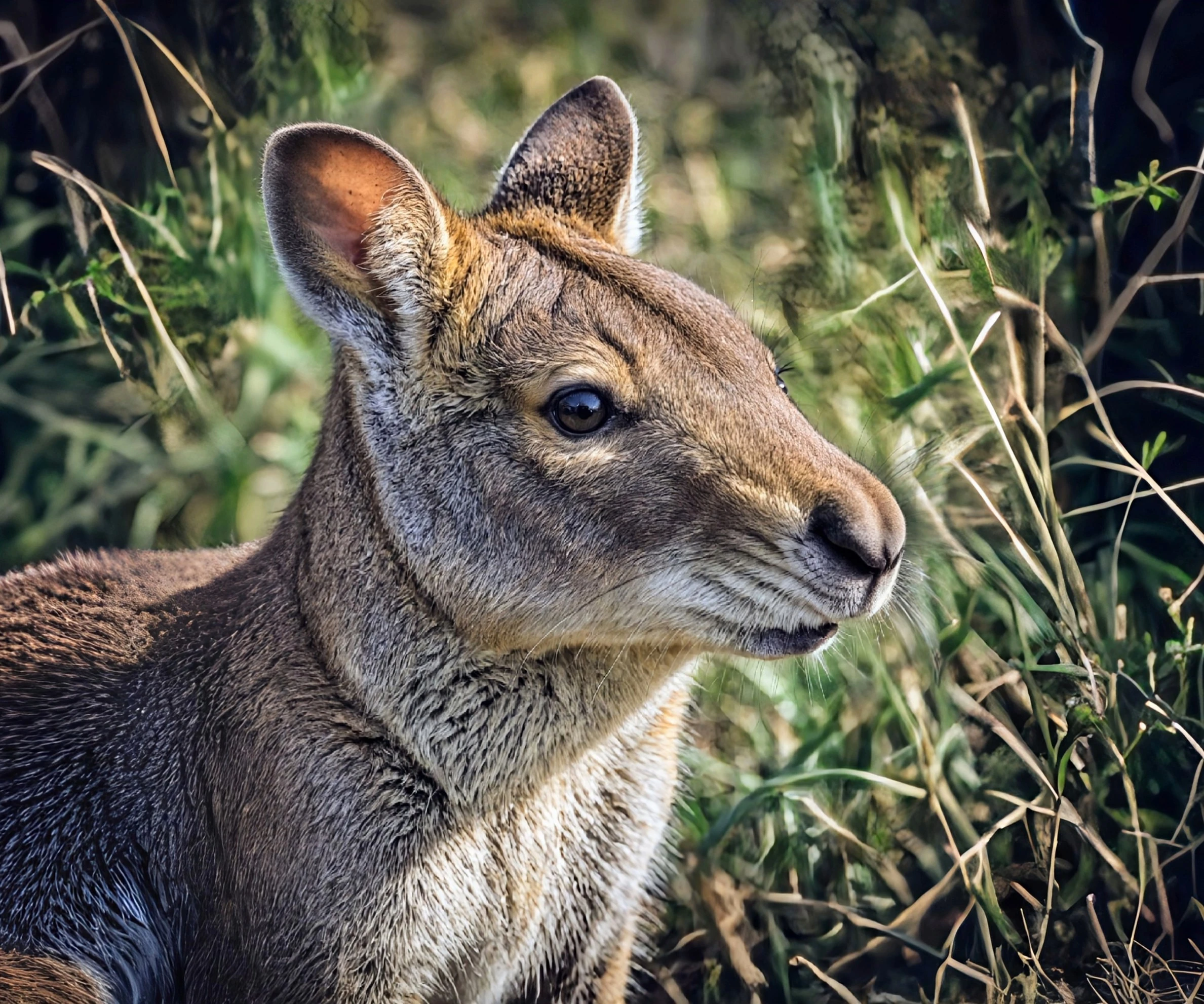Creating More Fox-Free Sanctuaries Crucial for Parma Wallaby Survival, Experts Say
Experts from The Australian National University (ANU) are calling for the establishment of additional fox-free safe havens and increased collaboration between government bodies and private landowners to help ensure the survival of the Parma wallaby, a species listed as vulnerable in Australia.
The Parma wallaby, also known as the white-throated wallaby, is classified as Near Threatened by the International Union for Conservation of Nature (IUCN) and is native to the Great Dividing Range in northern New South Wales.
ANU Professor George Wilson, co-author of a new paper that analyzes the history and relocation efforts of Parma wallaby populations, along with the challenges they face, states that predation is one of the biggest threats to the marsupial’s survival.
Wilson suggests that the Black Summer bushfires have likely devastated Parma wallaby populations and habitats, exacerbating their risk of extinction.
“An attempt to reintroduce a population near Robertson, New South Wales, failed after foxes killed over 40 Parma wallabies within three months,” Professor Wilson said.
He pointed out the contrast in New Zealand, where authorities are attempting to remove Parma wallabies due to their overabundance in predator-free areas.
“We know that Parma wallabies are thriving in a predator-free enclosure at Mount Wilson. To ensure their long-term survival, we need to create more privately owned sanctuaries and establish captive breeding programs similar to Mount Wilson’s,” Wilson added.
Need for More Safe Havens and Strategic Collaboration
The New South Wales government’s Saving Our Species program outlines various conservation strategies for the Parma wallaby. However, Wilson argues that these efforts fail to address the critical need for more safe havens.
Safe havens would provide several benefits, such as securing populations in the event of future bushfires, facilitating disease and genetic management, and protecting the species from vehicle collisions and predators like foxes.
The NSW National Parks and Wildlife Service is working on building an enclosure at Ngambaa Nature Reserve, which will relocate some Parma wallabies from Mount Wilson. However, researchers stress that more such facilities are necessary.
“Building and maintaining predator-proof fencing is expensive. The government should collaborate with private landholders to create these enclosures cost-effectively and foster cooperation between zoos, nature reserves, and private investors,” Professor Wilson suggested.
Criticism of Government Efforts
Samaa Kalsia from Australian Wildlife Services added that the actions outlined in the Saving Our Species strategy are “more aspirational than realistic” given the limitations of government agencies alone.
“A lot of the threats to Parma wallabies outlined by the NSW government are due to a lack of understanding about the animals’ habitat, food requirements, and the full extent of the impact of fox predation,” Kalsia, co-author of the paper alongside Wilson, said.
Kalsia noted that historically, little research has been conducted on Parma wallabies, contributing to the species’ heightened extinction risk. Furthermore, the state government’s conservation plan lacks incentives for private landowners to implement measures that would benefit the wallabies.
“It’s unlikely that the threats facing these animals will be addressed unless governments facilitate the creation of sanctuaries, like those at Yengo, Mount Wilson, Barrington Tops, and Bannockburn,” Kalsia concluded.
